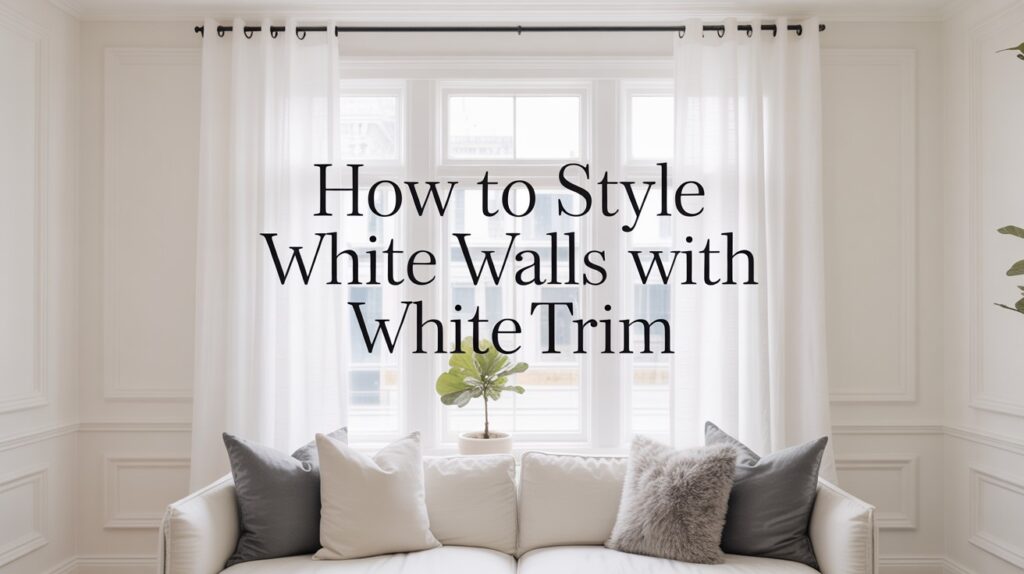White walls paired with white trim represent a timeless approach to interior design that continues to captivate homeowners and designers alike.
This classic combination offers numerous benefits, including the ability to make spaces appear larger, brighter, and more cohesive while providing a neutral backdrop that complements any decor style or color palette.
However, many people fall into the trap of assuming all whites are identical.
This common misconception can lead to flat, uninspiring spaces that lack visual interest.
The truth is that white comes in countless variations, from warm creams to cool grays, each with unique undertones that dramatically affect the overall feel of a room.
Understanding these subtle differences is key to creating sophisticated, layered white spaces that feel intentional and inviting.
Why Choose White Walls with White Trim?
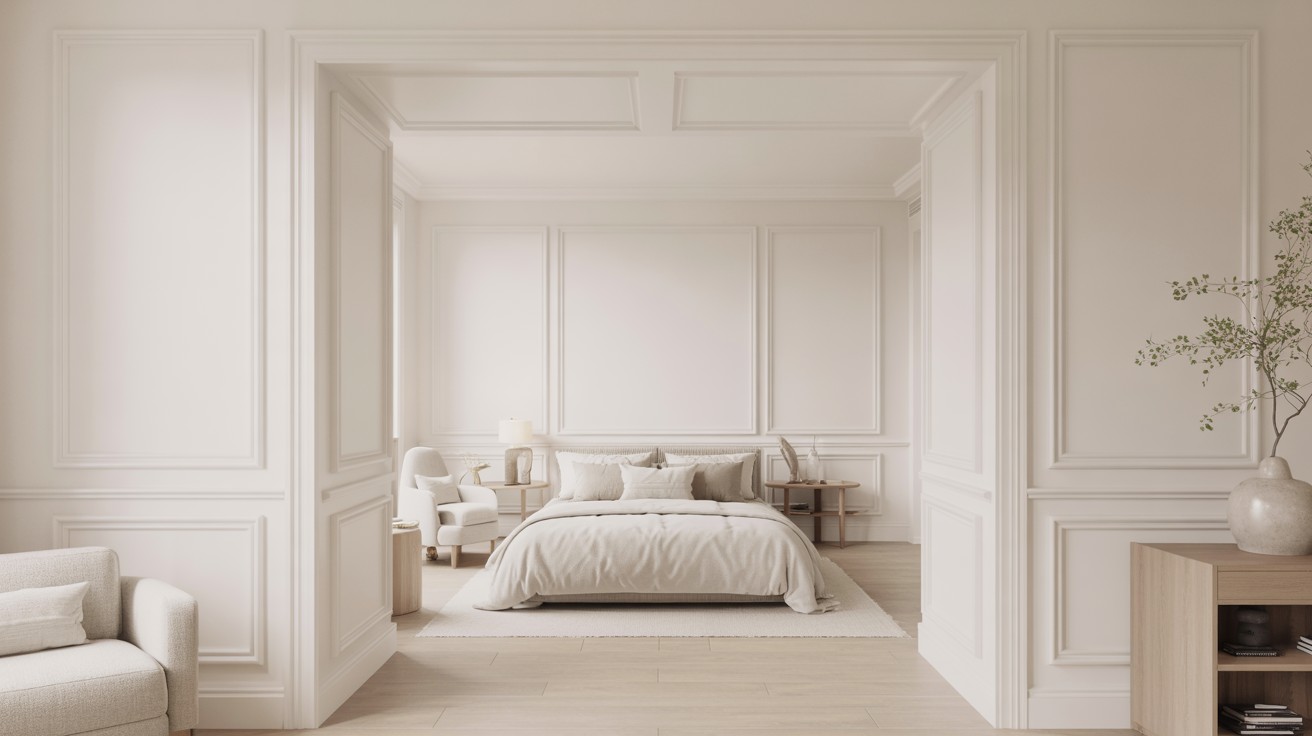
The advantages of using matching white tones on walls and trim for creating bright, cohesive, and timeless interior spaces.
Brightens and Opens Up the Room
White walls combined with white trim act as natural light amplifiers, reflecting both natural sunlight and artificial lighting throughout the space.
This reflective quality maximizes available light, making rooms feel significantly brighter even in areas with limited windows.
The monochromatic approach creates an airy, spacious atmosphere that visually expands the room’s boundaries, making small spaces feel larger and cramped areas appear more open and breathable.
Creates a Clean and Classic Look
This color combination delivers a minimalist yet refined aesthetic that never goes out of style.
The clean lines and fresh appearance provide a sophisticated foundation that feels both modern and timeless.
White-on-white serves as the perfect blank canvas, allowing furniture, artwork, and accessories to take center stage while maintaining a cohesive backdrop that complements any decor style from contemporary to traditional.
Unifies Architectural Elements
Using matching white tones on walls and trim creates seamless flow between built-ins, crown molding, baseboards, and ceiling details.
This unified approach makes architectural features appear intentional and cohesive rather than disjointed.
While maintaining the same color family, you can still achieve subtle dimension by varying the paint sheen – using flat or eggshell on walls and semi-gloss on trim creates gentle contrast through light reflection without breaking the monochromatic scheme.
Understand Your Undertones First
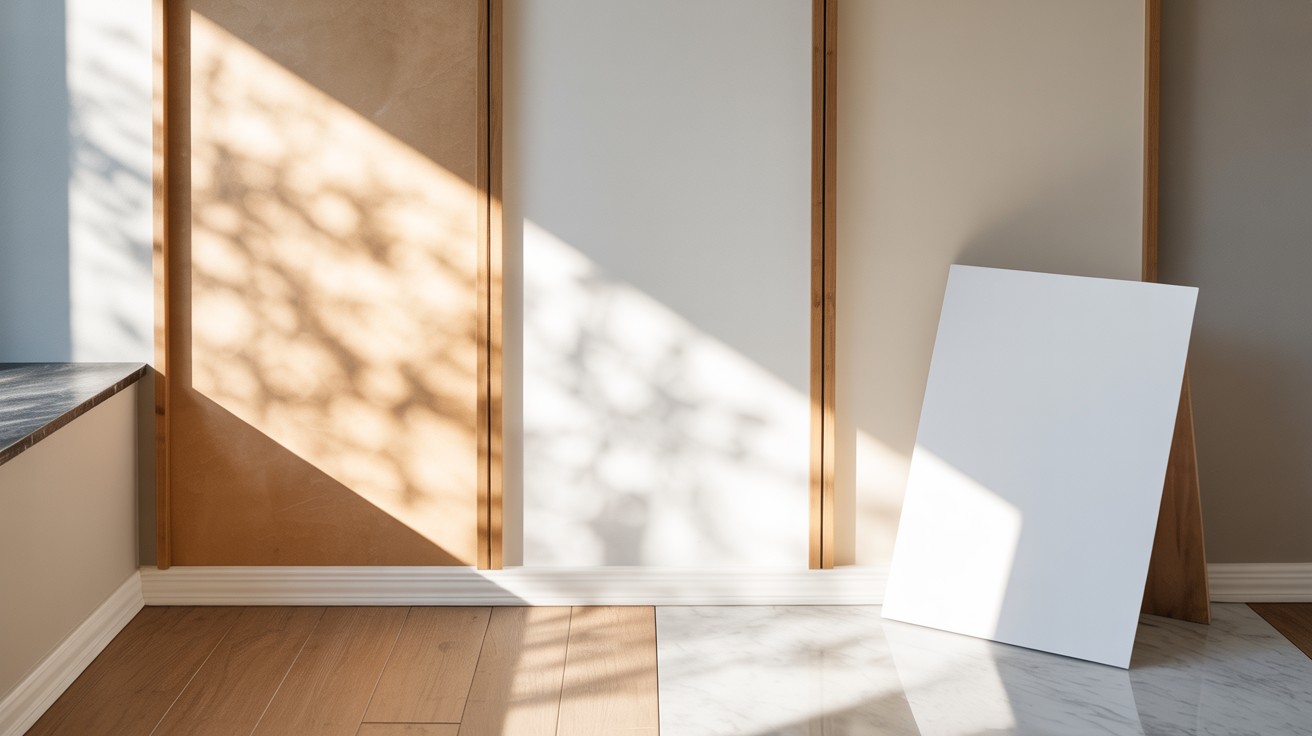
Learn to identify and work with the subtle color hints in white paint for better color coordination and room harmony.
What Are Undertones in White Paint?
White paint contains subtle color hints that significantly impact the overall feel of your space.
Warm undertones include yellow, beige, and peach notes that create cozy, inviting atmospheres reminiscent of candlelight or sunrise.
Cool undertones feature blue, gray, and green hints that produce crisp, fresh environments with a modern, spa-like quality.
Neutral undertones contain a balanced mix of warm and cool elements, offering versatility that works well in various lighting conditions and with different decor styles.
How to Identify Undertones
- The most effective method for identifying undertones involves comparing paint swatches directly to bright white printer paper.
- This comparison reveals the subtle color casts that might otherwise go unnoticed.
- Test paint samples in different lighting conditions throughout the day, as natural light changes from warm morning tones to cool midday brightness to warm evening hues, each affecting how undertones appear.
- Pay close attention to how your chosen paint interacts with existing fixed elements in the room.
- Observe how the white appears next to your flooring, countertops, existing trim, and other permanent features.
- These interactions can either complement or clash with your paint choice, making this step critical for achieving a cohesive look that feels intentional rather than accidental.
Design Approaches to Style a White-on-White Room
Five strategic methods for creating visual interest and depth in all-white rooms through texture, contrast, and accent placement.
1. Layering Textures
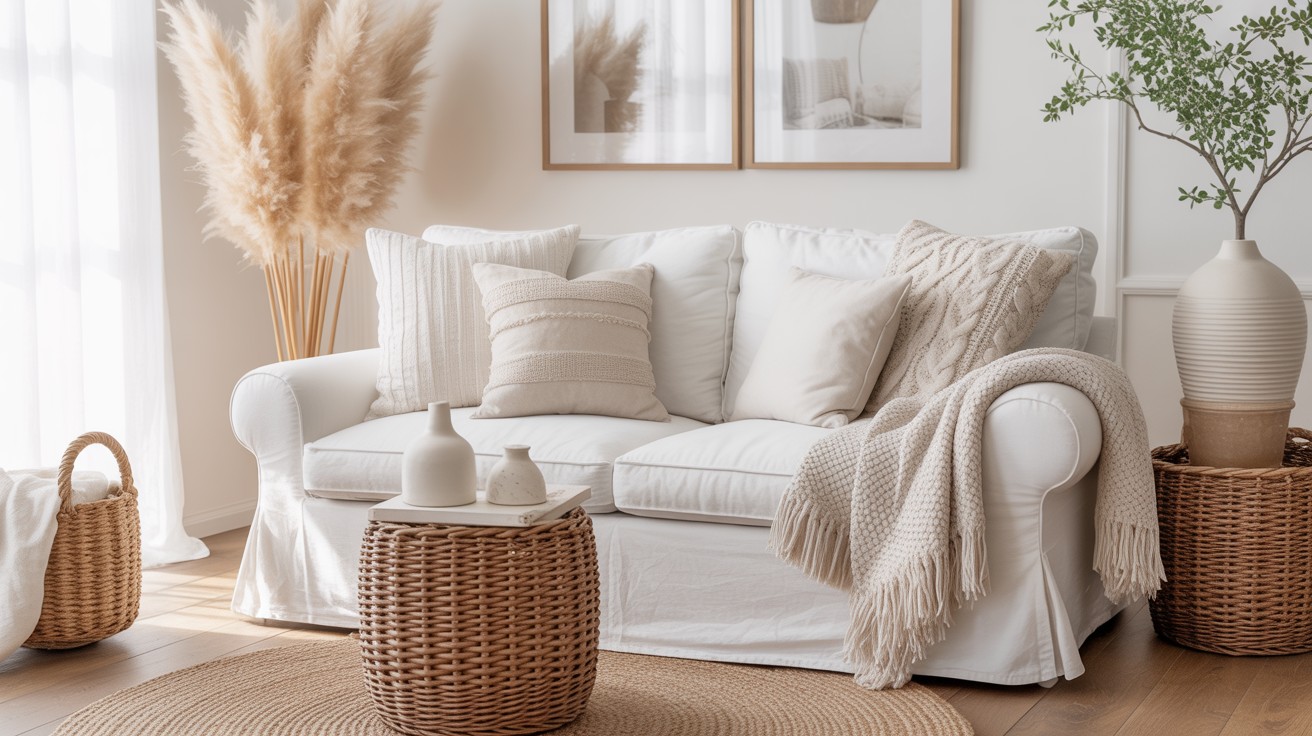
Incorporate various fabric and material textures to add visual interest and tactile appeal to your white space.
Mix soft linens with chunky wool throws, natural jute rugs with plush velvet cushions, and smooth ceramics with rough woven baskets.
This layering approach adds warmth and depth, preventing the room from feeling cold or sterile while maintaining the clean aesthetic that white-on-white provides.
2. Playing with Neutral Contrast
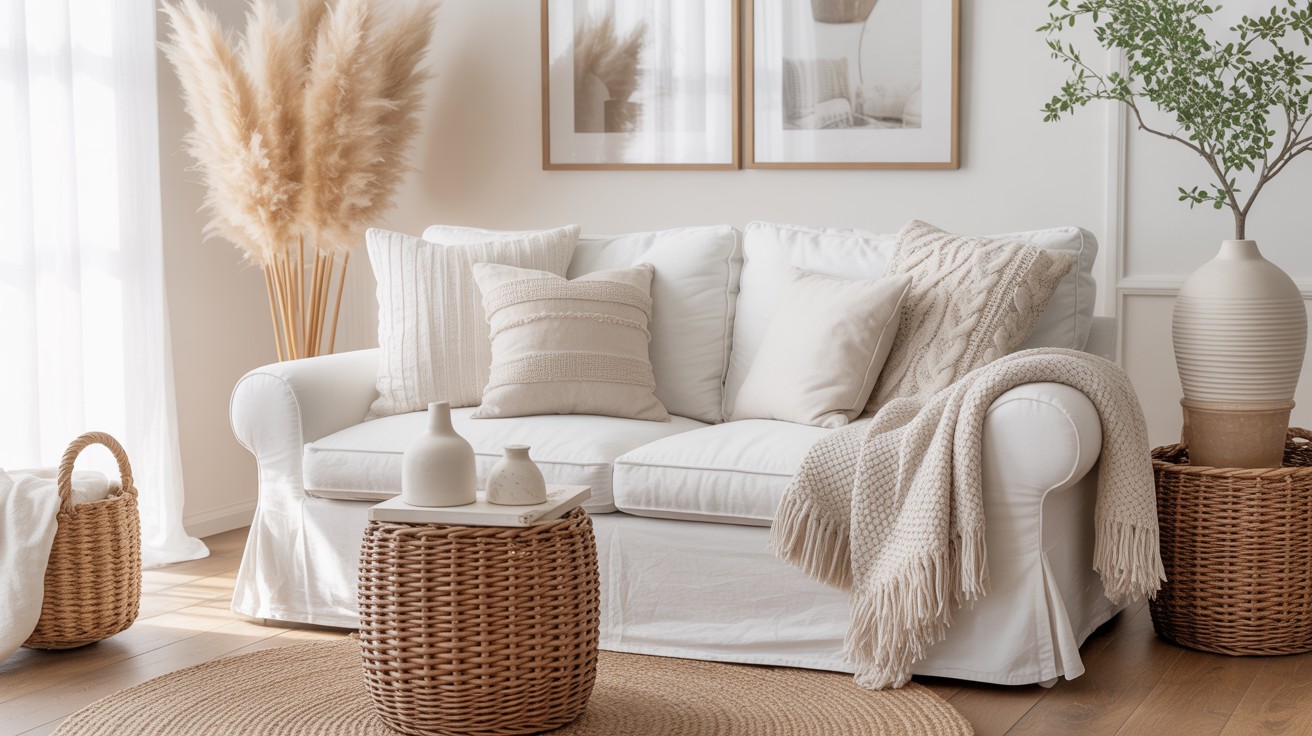
Create subtle dimensions by combining different white tones within the same space.
Pair creamy, warmer whites with crisp, brighter whites to establish gentle contrast without breaking the monochromatic scheme.
Complement these variations with natural elements like wood tones, stone surfaces, or woven rattan pieces that add organic warmth and visual interest while staying within the neutral palette.
3. Add Bold Accents
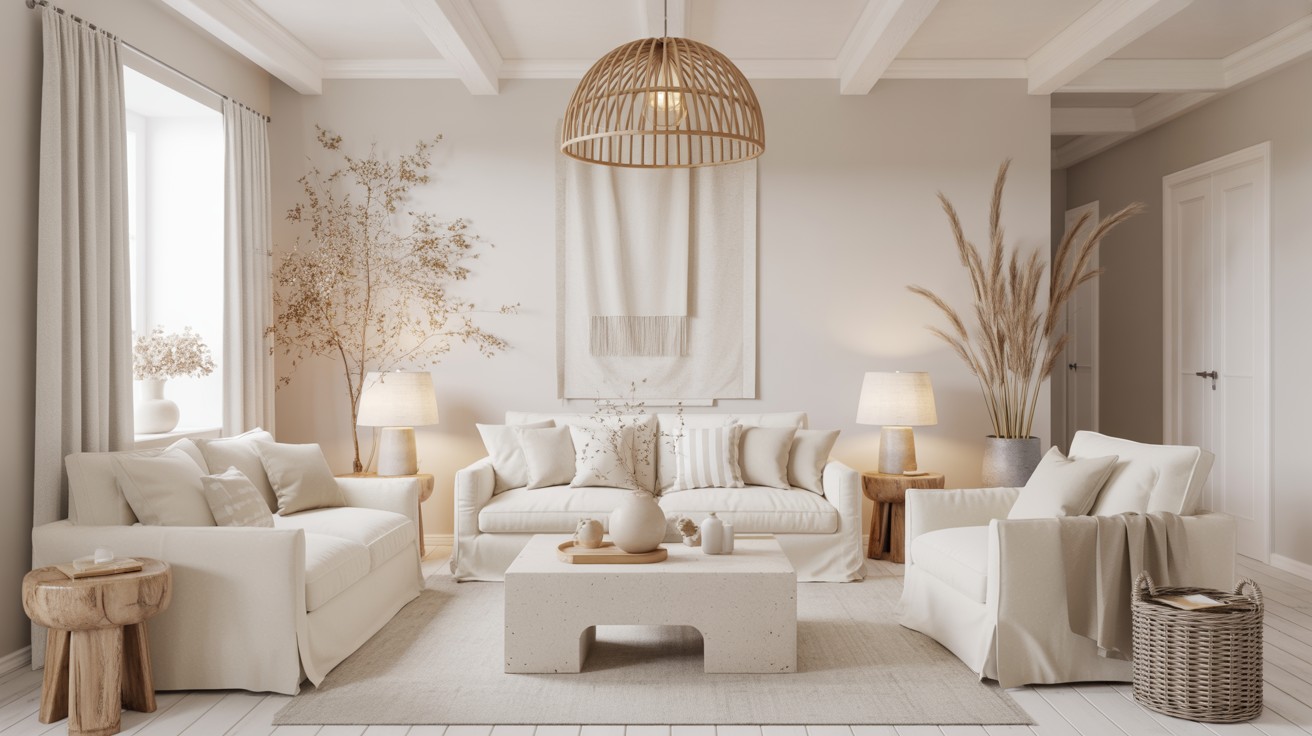
Strategic placement of statement pieces creates focal points that pop against the white backdrop.
Large-scale artwork, dramatic furniture pieces, or striking light fixtures serve as anchors in the space.
Bold accent colors such as deep navy, rich black, warm brass, or vibrant emerald create contrasts that make both the accents and the white background more impactful.
4. Embrace Architectural Details
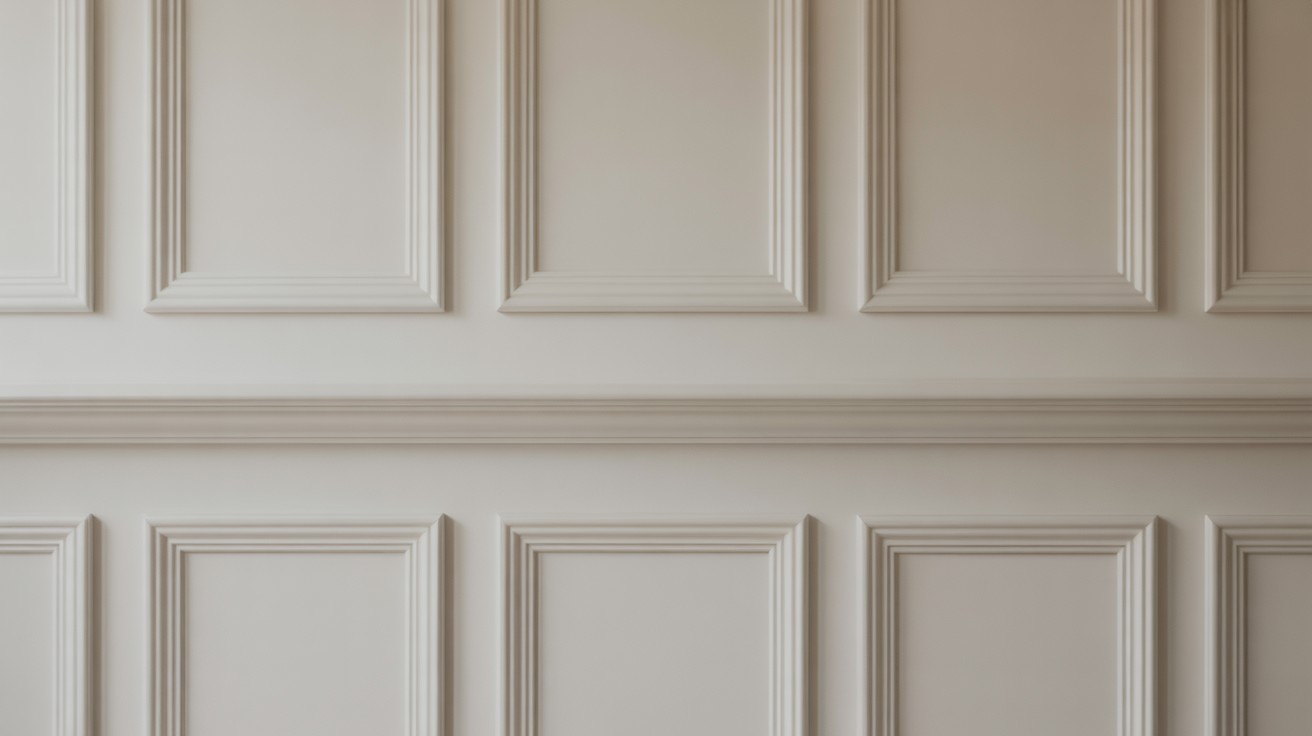
Highlight existing architectural features like crown molding, wainscoting, or picture frame molding by using paint sheens strategically.
Apply semi-gloss paint to trim elements while keeping walls in flat or eggshell finishes.
This technique brings out shadow lines and creates subtle depth through light reflection, making architectural details more prominent without using different colors.
5. Use Warm or Cool Whites Strategically

Match your white undertones to your desired style and atmosphere.
Warm whites with yellow or beige undertones work beautifully in cozy, traditional settings like farmhouse or classic interiors, creating inviting, comfortable spaces.
Cool whites with blue or gray undertones suit crisp, modern aesthetics or coastal themes, producing fresh, clean environments that feel spacious and serene.
Coordinating Furniture and Decor with White Walls and Trim
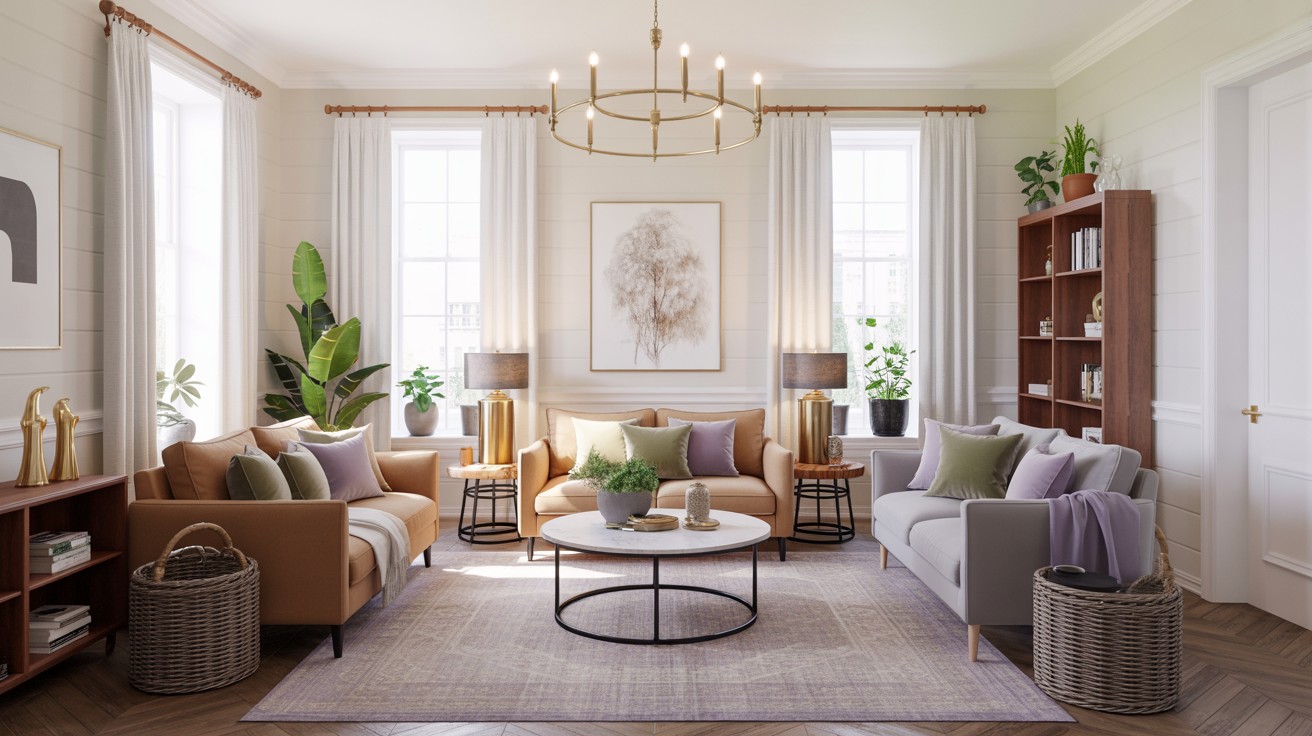
Tips for selecting furniture colors and natural elements that complement and enhance white walls with white trim.
Choose Complementary Color Palettes
Earth tones like camel, sage, and taupe bring natural warmth to white spaces, creating inviting environments that feel grounded and comfortable.
These colors work particularly well in living areas and bedrooms where you want to foster relaxation.
Cool tones including various blues, soft grays, and gentle lavender create modern, calming atmospheres that feel fresh and serene, making them ideal for bathrooms, bedrooms, or contemporary spaces.
For added sophistication and visual weight, incorporate black accents, warm brass fixtures, or rich wood tones that provide striking contrast against the white backdrop while adding depth and interest to the overall design.
Incorporate Natural Elements
Bring organic character to your clean white base by introducing woven baskets for both storage and texture, reclaimed wood pieces that add history and warmth, and live plants that provide color and life to the space.
These natural elements soften the crispness of white walls and trim while maintaining the clean aesthetic.
Woven textures add visual interest, wood brings natural grain patterns and warm tones, and greenery introduces subtle color variation while improving air quality and creating a connection to nature within your refined white environment.
Conclusion
White-on-white design is far from boring when executed with precision and attention to detail.
The key lies in understanding the subtle nuances that make this classic combination work beautifully in any space.
Focus on identifying and matching undertones to create harmony between walls and trim, while using different paint sheens to add depth and visual interest.
Layer in varied textures, natural elements, and complementary colors to prevent the space from feeling flat or sterile.
With the right approach that considers lighting, undertones, and thoughtful styling choices, white walls paired with white trim create spaces that are both timeless and fresh.
This versatile foundation allows your personality and decor to shine while maintaining a sophisticated, cohesive look that never goes out of style.
Frequently Asked Questions
Do all white paints look the same on walls and trim?
No, white paints have different undertones like warm yellows, cool blues, or neutral grays that significantly affect their appearance. These subtle differences become more obvious when paints are placed next to each other, making it important to test samples first.
What’s the best way to add interest to an all-white room?
Layer different textures through fabrics, rugs, and natural materials like wood and woven baskets to create visual depth. Use varying paint sheens between walls and trim, and add bold accent pieces or artwork for focal points.
Should I use the same paint sheen on both walls and trim?
Using different sheens creates necessary depth and dimension in white-on-white spaces. Apply flat or eggshell finishes on walls and semi-gloss on trim to highlight architectural details while maintaining color cohesion.
How do I choose between warm and cool white undertones?
Warm whites with yellow or beige hints work well for cozy, traditional styles and spaces with limited natural light. Cool whites with blue or gray undertones suit modern, minimalist designs and rooms with abundant natural light.
What colors work best with white walls and white trim?
Earth tones like sage, camel, and taupe add warmth, while cool blues and grays create modern calm. Black, brass, and natural wood provide sophisticated contrast without overwhelming the clean white foundation.

